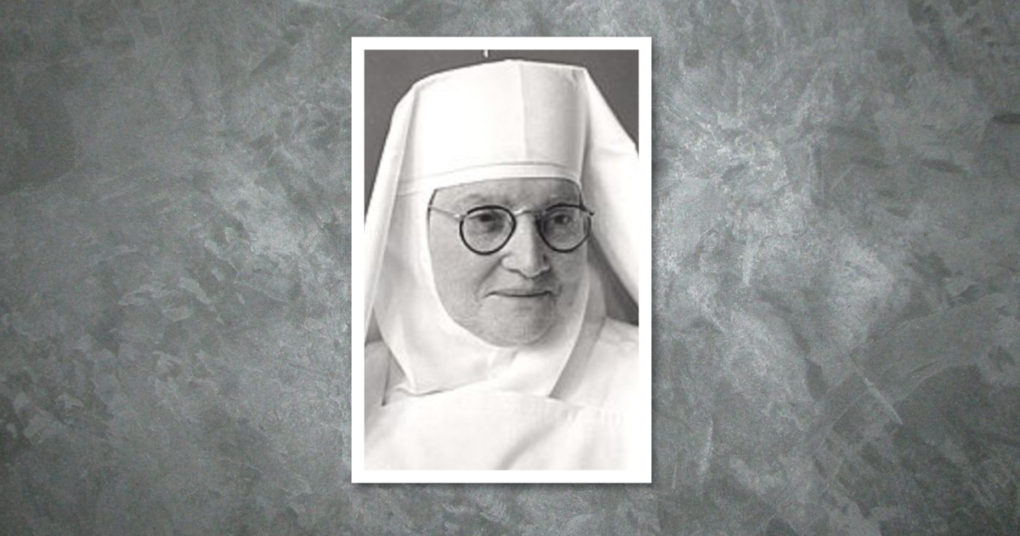Love Is The Answer: The story of Mother Kevin
Sr M Louis OSF
Fallons
1964
254 pages
Much of the story of the impact of Irish missionaries has yet to be written. Some contributions have shaped nations. This biography is the story of one of them, Mother Kevin Kearney, a native of County Wicklow who moved to London at the age of 18, where she entered the Convent of the Franciscan Sisters and took her final vows in 1898. She was particularly interested in missionary work and spent most of her religious ministry in Uganda. She is seen as a pioneer in education in Uganda and was also responsible for the initial shaping of the health care system and its standards. She started more than twenty convents each with a school and hospital beside it. Those institutions have grown to be the backbone of the health and educational service in the country.
She arrived in Uganda in 1903 and died in Boston in 1957. Her remains were brought back and buried in Mount Oliver near Dundalk but due to popular demand the people of Uganda clamoured for her remains, so she was exhumed and transferred to a beautiful shrine in a place called Nkokonjeru (The White Hen) thirty-five miles from the capital, Kampala. Her arrival and burial followed the procedures for a local queen. She may have been the first Irish person to have been exhumed?
Before she arrived in Uganda, hospitals were unheard of: people were treated in the villages only. Often she was consulted by the colonial government because “she knew the natives”. She was a mother, guide, and counsellor to hundreds of every race, tribe and creed.” Her hospitals and schools had to be of the highest standards.
Similarly education for girls was unheard of before she came. African opinion was strongly opposed to education for girls and for once she was strongly opposed to African opinion. With an eye to the future she saw the need for higher education and a teacher training college was eventually started. From her schools came the first women leaders of the country in the different professions. She had insisted on the teaching of English, which was to have huge consequences.The first Ugandan school for the education of children with special needs was started by her in 1954 for the visually impaired.
Her work was recognised by the colonial British Government in the 1920s with the awarding of an OBE. However that was not too well received by her family in Ireland who were sympathetic to the War of Independence.
Country boundaries as they now exist were unknown; the area was called the Vicariate of the Upper Nile. This meant that she travelled everywhere and set up hospitals in far away places, Muthale Hospital in Kitui and Nyabondo in Kisumu, both in modern day Kenya, a distance which by car today could take eight hours. Both of these hospitals are the largest today in their respective dioceses.
To the older people she was “Kevina Sebo” (Sir) they gave her the royal masculine address reserved for princesses. To the growing children she was simply “Kevina”, an institution in herself, part of their daily lives. Her name was absorbed into their language and associated with many things: hospitals, schools, advice, admonitions and gifts. The bus stop outside Nsambya Hospital in Kampala which she founded is today called “Kevina”.
In some tongues in Africa a “Kevin or a Kevina”, means a hospital, a school, any institution of charity. To do a “Kevina” means to perform an act of generosity, an inestimable service, something of perfect love. US Dakota planes used to drop supplies to embattled soldiers in Burma during the second world war. Some of those soldiers were Ugandans. They referred to these planes as “Mama Kevinas”.
“Only rarely does a person so admirably illustrate a quality, so effectively play a task, or so convincingly personify an idea that their name becomes part of the ordinary speech of the people. When it does, it is memorial as lasting as marble.”
“A little Irish lady of no bulk at all; smiling her way through life’s ups and downs; taking on her shoulders burdens that would stagger an Atlas; a power of force and attraction, keen-witted, clever and generous.”
Cardinal Cushing of Boston, her greatest benefactor, said “she was the greatest missionary nun I ever met”.
Seeing the need for nuns to get involved in medical and nursing care in mission territories, she pushed for legislation in this area which subsequently made it easier for later religious orders to get involved in maternity care.
She founded two religious orders, The Franciscan Missionary Sisters for Africa and The Little Sisters of St Francis, the latter is a native order with hundreds of members. When these congregations reached maturity there were twenty-seven tribes represented among its members, a miniature model of a united Uganda.
Great leader as she was, Mother Kevina was first and foremost a holy woman, a spiritual giant.
For the Irish traveller it can be surprising to find that no visa is required by Irish people visiting Uganda. This is not a common occurrence; could she be the reason?
As all her work was done outside of Ireland she is little known at home but has blazed a trail elsewhere. Her process of Beatification is ongoing, the Cause having been officially accepted by the Congregation for the Causes of Saints in 2016 and she was declared a “Servant of God”. More detail is available on the Archdiocese of Armagh’s website https://www.armagharchdiocese.org/beatification-mother-kevin-kearney-osf-1875-1957/
About the Author: Rev. Conor Donnelly
Rev. Conor Donnelly qualified as a medical doctor in University College Dublin in 1977 and worked for a year at St. Vincent’s Hospital, Dublin. After ordination he has spent twenty-two years doing pastoral work in Asia, in the Philippines and Singapore. He is currently an assistant chaplain at Kianda School in Nairobi.

